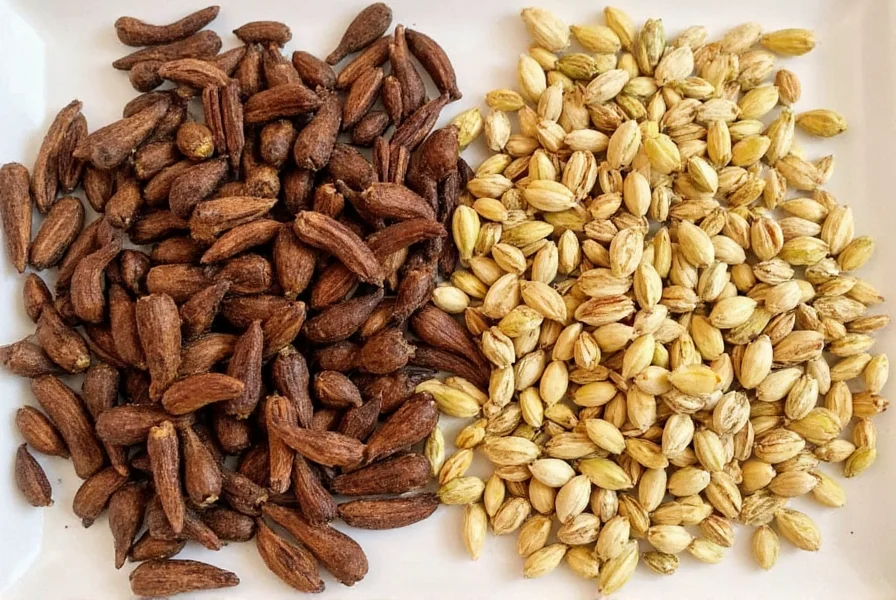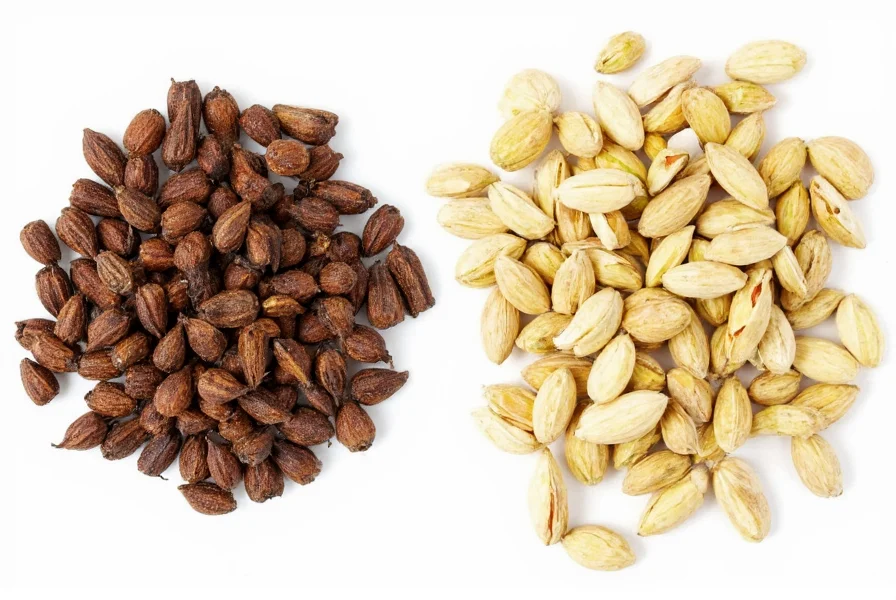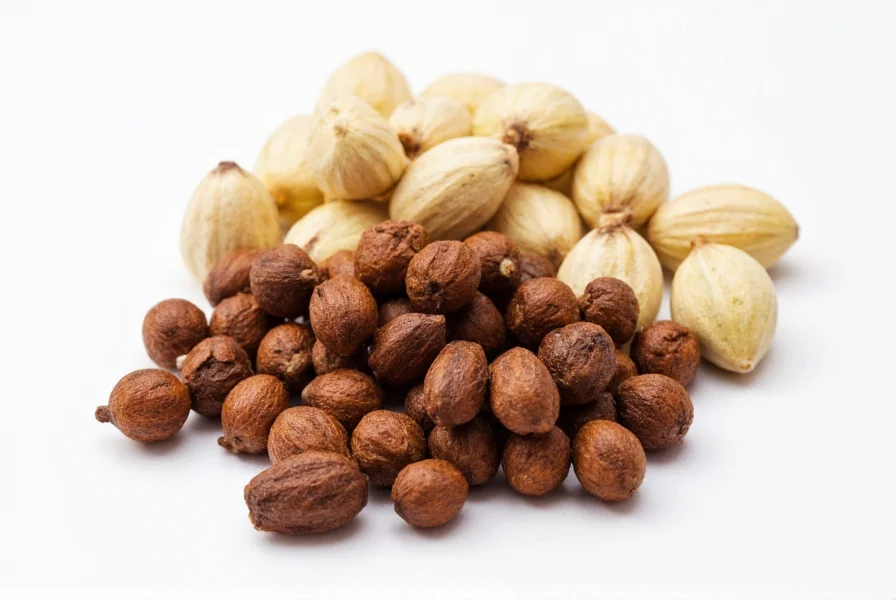Clove and cardamom represent two pillars of the spice world, each bringing unique characteristics to culinary and wellness traditions. These aromatic treasures have journeyed from their native habitats to become essential ingredients in kitchens worldwide. Understanding their properties helps home cooks and professional chefs alike harness their full potential in creating memorable dishes and wellness remedies.
Botanical Origins and Historical Significance
Cloves (Syzygium aromaticum) originate from the Maluku Islands in Indonesia and have been traded since ancient times. Historical records show cloves were so valuable in the Roman Empire that they were considered worth their weight in silver. Cardamom has two main varieties: green cardamom (Elettaria cardamomum) from India and Sri Lanka, and black cardamom (Amomum subulatum) from the Himalayas. Both spices played crucial roles in the historic spice trade routes connecting Asia with Europe and the Middle East.
Physical Characteristics and Flavor Profiles
Cloves appear as small, nail-shaped dried flower buds with a dark brown color. Their intense, warm, slightly sweet flavor comes primarily from eugenol (70-90% of their essential oil composition). Cardamom pods contain tiny black seeds; green cardamom offers a delicate, citrusy flavor with herbal notes, while black cardamom delivers a smokier, more robust profile. The key compound in cardamom is 1,8-cineole (20-50% of essential oil), which creates its distinctive aroma.
| Characteristic | Clove | Cardamom |
|---|---|---|
| Primary Compound | Eugenol (70-90%) | 1,8-Cineole (20-50%) |
| Flavor Profile | Warm, pungent, slightly sweet | Citrusy, herbal, complex |
| Common Forms | Whole buds, ground | Whole pods, seeds, ground |
| Storage Life | 1-2 years (whole), 6 months (ground) | 1 year (whole pods), 6 months (ground) |
Culinary Applications Across Global Cuisines
Clove and cardamom in Indian cuisine form the backbone of many spice blends. In garam masala, both spices combine with cinnamon, cumin, and coriander to create complex flavor foundations. Scandinavian baking relies heavily on cardamom for sweet breads like Swedish kardemummabullar, while cloves feature prominently in German Lebkuchen and mulled wines. Middle Eastern coffee traditions often include cardamom pods for aromatic enhancement, and cloves frequently appear in Moroccan tagines and rice dishes.
When exploring how to use cardamom and clove in baking, consider their potency differences. Cardamom works well in sweet applications at 1/4 to 1/2 teaspoon per recipe, while cloves require more restraint—typically 1/8 teaspoon or fewer whole cloves per dish—to avoid overwhelming other flavors. The differences between clove and cardamom become particularly important when balancing spice levels in delicate recipes.

Evidence-Based Health Benefits
Research into the health benefits of clove and cardamom reveals promising properties. Cloves demonstrate significant antimicrobial effects due to eugenol, with studies showing effectiveness against various bacteria and fungi. Cardamom shows potential cardiovascular benefits, with research indicating it may help lower blood pressure and improve lipid profiles. Both spices contain antioxidants that combat oxidative stress, though their concentrations differ significantly.
Traditional uses of clove and cardamom in Ayurvedic and Chinese medicine include addressing digestive issues and respiratory conditions. Modern research partially supports these applications, particularly regarding cloves' potential for dental pain relief and cardamom's role in supporting digestion. However, the clove and cardamom tea benefits often touted online require more rigorous scientific validation, as most studies use concentrated extracts rather than typical beverage preparations.
Practical Usage and Storage Recommendations
For optimal flavor retention, store both spices in airtight containers away from light and heat. Whole cloves maintain potency for 1-2 years, while ground cloves lose flavor within 6 months. Cardamom pods preserve freshness longer than pre-ground spice—up to one year when stored properly. To maximize flavor extraction, lightly crush cardamom pods before use and add whole cloves early in cooking to allow their flavors to infuse throughout the dish.
When substituting between forms, remember that 1 whole clove equals approximately 1/8 teaspoon ground clove, and 10 cardamom pods yield about 1½ teaspoons of seeds. For those exploring cardamom vs clove flavor profile differences, consider starting with small quantities and adjusting to taste, as both can easily dominate a dish when overused.

Signature Dishes Featuring Clove and Cardamom
These spices shine in specific culinary applications where their unique properties enhance the overall dish. In biryani, cardamom provides the distinctive floral note that defines this fragrant rice dish, while cloves add depth to the meat marinade. Scandinavian pepparkakor (ginger cookies) rely on cloves for their characteristic warmth, and Middle Eastern qahwa (traditional coffee) features cardamom as its primary flavoring agent.
For home experimentation, try adding one whole clove to tomato-based sauces for subtle complexity, or infuse cardamom pods in milk for rice pudding. The traditional uses of clove and cardamom in chai preparation demonstrate their complementary nature—typically 2-3 cardamom pods and 4-5 cloves per serving create a balanced spice profile.
Frequently Asked Questions
What are the primary differences between clove and cardamom?
Cloves have a warm, pungent flavor profile dominated by eugenol, while cardamom offers a complex citrusy, herbal taste with 1,8-cineole as its primary compound. Cloves come from flower buds of an evergreen tree, whereas cardamom develops from seed pods of a ginger-family plant. Culinary applications differ significantly—cloves work best in small quantities for depth, while cardamom can be used more liberally in both sweet and savory dishes.
Can I substitute cardamom for cloves in recipes?
While both are warm spices, they have distinct flavor profiles that don't substitute well for one another. Cardamom cannot replicate cloves' intense warmth, and cloves lack cardamom's citrus notes. In emergency substitutions, use 1/4 teaspoon allspice plus a pinch of cinnamon to approximate clove flavor, or combine nutmeg with a citrus zest for cardamom. For authentic results, it's best to use the specified spice.
What are evidence-based health benefits of clove and cardamom?
Research shows cloves contain eugenol with demonstrated antimicrobial properties, potentially beneficial for oral health. Cardamom shows promise for cardiovascular health, with studies indicating blood pressure and lipid profile improvements. Both spices contain antioxidants, but most health claims require more rigorous human studies. Current evidence supports culinary use for flavor rather than therapeutic applications without medical guidance.
How should I store clove and cardamom for maximum freshness?
Store both spices in airtight containers away from light, heat, and moisture. Whole cloves maintain potency for 1-2 years, while ground cloves last about 6 months. Cardamom pods preserve freshness for up to one year when stored properly, but lose flavor quickly once ground. For best results, buy whole spices and grind them as needed using a dedicated spice grinder or mortar and pestle.
Which cuisines use both clove and cardamom prominently?
Indian cuisine features both spices extensively in dishes like biryani and garam masala. Middle Eastern cooking uses them in rice dishes, meats, and traditional coffee. Scandinavian baking incorporates cardamom in sweet breads while using cloves in ginger cookies. Moroccan tagines and Persian rice dishes also combine these spices for complex flavor profiles. Their complementary nature makes them a classic pairing in many global culinary traditions.











 浙公网安备
33010002000092号
浙公网安备
33010002000092号 浙B2-20120091-4
浙B2-20120091-4